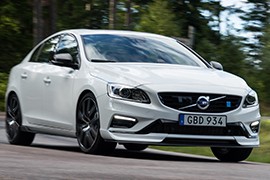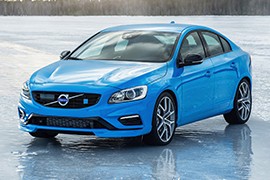VOLVO S60 Polestar Models/Series Timeline, Specifications & Photos
First production year: 2014
Engines: Gasoline
After Volvo broke the chains with Ford, it started to dream better and evolve to a different level. It was more focused on safety and ecological cars. But the Polestar versions were its spoiled offsprings.
When you hear the expression “bring everything you got,” you might think of a drama or action movie. For Volvo, that was what the new management told the motorsports department. And the engineers from there brought all they got and put it into one car: the S60 Polestar. It was the car that Volvo could do it a long time ago, but they were assigned to stick with the safety leader badge, not the sport one. But Polestar was something else. It was a small racing team acquired by Volvo in 2015, and the S60 Polestar was their first product under the roof of the Swedish carmaker.
For starters, the designers gave more stance to the midsize Volvo sedan by adding a new lip-spoiler, a trunk spoiler, and a diffuser under the rear bumper. A pair of big exhaust was far from any ecological statement but quite convincing for anyone who wants to go faster. To complete the image of the bad guy of the family, Volvo installed 20” light-alloy wheels.
Inside, the Polestar version was similar to its S60 siblings, but it featured a different trim on the center console, which featured carbon-fiber accents. Its bucket-seats with high bolstering had blue stitching, the official color of the Polestar.
Under the hood, the engineers installed an inline-four engine with a supercharger and a turbocharger. Power went into all four corners via an 8-speed automatic gearbox.
Volvo created the most expensive version of its S60 model, wearing the Polestar badge, and entered the market of the performance sedan segment with this 350 PS vehicle.
The Swedish automaker had a long history in motorsports, and its engineers dreamed of having a sports-oriented model in the lineup. But that wasn't exactly possible under its previous owner, Ford. So, after the Chinese company Geely bought Volvo, they green-lighted the Polestar project, which resulted in the V60/S60 versions as station wagons and sedans, respectively. Thus, the automaker entered competition against the M3 from BMW and the C63 AMG from Mercedes-Benz. Nevertheless, Audi S4 was in its crosshair.
From the outside, the S60 Polestar stood apart from the rest of the range thanks to its unique blue shade. Its front bumper was different than its lesser-powered siblings, sporting an A-shaped lower grille flanked by a pair of scoops that hosted the LED daytime running lights. On the main grille, the automaker placed the squared blue badge, which said "Polestar" on it. From its profile, the car boasted its 20" alloy wheels. As a final detail, the back of the car was adorned with a lip spoiler on the trunk and a diffuser below the rear bumper.
Inside, Volvo installed sports bucket seats at the front and a bench profiled for two in the back. There was limited to no legroom for a third passenger in the middle due to the tall transmission tunnel. The driver had a similar-looking instrument panel as in the rest of the S60 range. There, the speedometer took center stage, and the speed was displayed with numbers. On the sides, the carmaker placed another two displays for data gathered from the onboard computer. All Polestar versions came fitted with the same interior, including a ten-speaker Meridian sound system. The only option was the sunroof.
Underneath the hood, Volvo placed a three-liter inline-six paired with a six-speed automatic that sent the torque in all car's corners.

